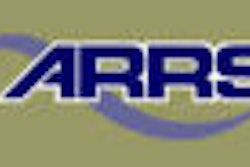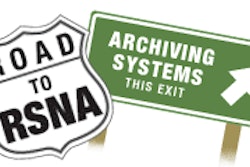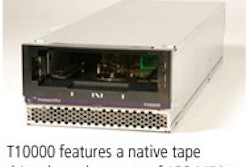AUSTIN, TX - According to Greek mythology, the goddess Athena sprang fully formed from the forehead of her father, Zeus. Unfortunately, radiology information technology doesn't arrive fully functioning and ready for action. The overwhelming majority of systems are pieced together from various vendors, a component or two at a time.
Achieving interoperability for this jumble of technology can lead to many long days, late nights, and varying degrees of frustration for system administrators -- particularly when products must also interact with other clinical systems in the healthcare enterprise.
A team from the radiology department of Froedtert Hospital at the Medical College of Wisconsin in Milwaukee, led by Kevin Ehlers, took on this challenge and developed an integrated workstation to bring together disparate information systems. They created a solution for optimizing workflow when integrating multivendor RIS and PACS products, according to a poster presentation at this week's Society for Computer Applications in Radiology (SCAR) meeting.
"Radiologists interact with several information systems for image interpretation and report generation," they wrote. "In addition to RIS and PACS, radiologists may require access to an electronic medical record (EMR) for viewing additional patient information, a laboratory information system (LIS), and a system for dictation/voice recognition."
The team noted that because institutions implement products from different vendors, the systems may not share information, and may have separate logons, user interfaces, and input devices. This situation introduces problems for radiologists and can compromise the standard of care.
"This scenario can introduce inefficiency in radiologist workflow, make it difficult to locate critical information, and introduce the possibility of error," the researchers wrote.
The group found the impetus for its solution with the implementation of a new RIS from Epic Systems (Madison, WI) that is part of an enterprise-wide EMR installation. The department already had a PACS product in place from McKesson Provider Technologies - Medical Imaging Group (Richmond, British Columbia).
The developers created a set of functional requirements for integrating the RIS application into the radiologists' workflow at the institution. They specified that a single sign-on would open both applications simultaneously; the RIS would display on a separate color monitor; a single keyboard and mouse would drive all applications; the RIS would update study status in PACS, workflow would be based on the RIS work list, and patient context would be preserved between the RIS and PACS; and finally, the integration of the products would not degrade the speed or performance of either application.
The team considered various options to achieve its requirements, looking at separate PACS and RIS workstations for the applications, running the RIS via Citrix (Fort Lauderdale, FL) on the PACS workstation, and installing the RIS as a thick client on the PACS workstation.
They ultimately decided on the thick-client solution, but this required the creation of a custom interface between the applications. The group utilized a Microsoft (Redmond, WA) COM-based application programming interface (API) for communicating between the RIS and PACS.
The RIS, according to the authors, drives the opening and closing of all images and the PACS work list is disabled. However, for emergency cases in which a patient has not yet been entered into the RIS, the PACS work list is made available while the RIS is secured until it is closed. The API has commands that allow it to open studies, secure authentication, handle workstation and application timeouts, and close studies as dictated or final.
Once a report is completed, the RIS updates the study status in PACS, advances to the next exam on the work list, and opens the associated images automatically, the developers reported. The workstation is run on a single computer, and uses one mouse, keyboard, and microphone for all applications.
Perhaps most important, from a continuum of care standpoint, it enables the department's radiologists to access pertinent patient information from other clinical applications in the institution. It also provides clinicians throughout the healthcare enterprise with access to the radiology department's findings.
"Access to the patient's medical record is available through the chart review function in the RIS," the authors wrote. "Likewise, radiology results are also available to the enterprise via the EMR."
By Jonathan S. Batchelor
AuntMinnie.com staff writer
April 28, 2006
Related Reading
EMR tool creates feedback on critical findings, April 28, 2006
Israeli HMO constructs successful RHIO, March 17, 2006
Integrating disparate systems key to EHR deployment, February 14, 2006
Diagnostic imaging and clinical information systems: An integration primer, April 14, 2005
Contracting IHE key for interoperable implementation, March 11, 2005
Copyright © 2006 AuntMinnie.com



















